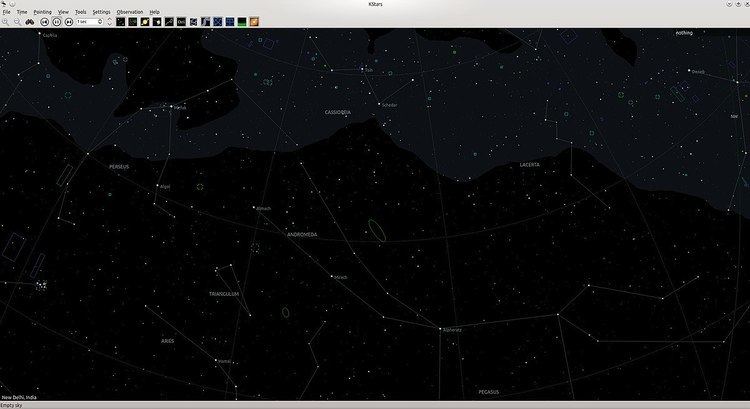Platform KDE | ||
 | ||
Stable release 2.7.0 / 28 October 2016; 4 months ago (2016-10-28) Repository projects.kde.org/projects/kde/kdeedu/kstars/repository Operating system | ||
KStars is a planetarium program using the KDE Platform. It can be used on most Unix-like computer operating systems, as well as on the Microsoft Windows platform using 'KDE for Windows'. It provides an accurate graphical representation of the night sky, from any location on Earth, at any date and time. The display includes up to 100 million stars (with additional addons), 13,000 deep sky objects, constellations from different cultures, all 8 planets, the Sun and Moon, and thousands of comets and asteroids. It has features to appeal to users of all levels, from informative hypertext articles about astronomy, to robust control of telescopes and CCD cameras, and logging of observations of specific objects.
KStars supports adjustable simulation speeds in order to view phenomena that happen over long timescales. For astronomical calculations, Astrocalculator can be used to predict conjunctions, and perform many common astronomical calculations. The following tools are included:
KStars has been packaged by many Linux/BSD distributions, including Red Hat Linux, OpenSUSE, Mandriva Linux, and Debian GNU/Linux. Some distributions package KStars as a separate application, some just provide a kdeedu package, which includes KStars. KStars is distributed with the KDE Software Compilation as part of the kdeedu "Edutainment" module.
KStars participated in Google Summer of Code in 2008, 2009, 2010, 2011 2012, 2015 and 2016. It has also participated in the first run of ESA's Summer of Code in Space in 2011.
It has been identified as one of the three best "Linux stargazing apps" in a Linux.com review.
The latest version of KStars is 2.4.0, released with KDE Applications 15.12. Released under the GNU General Public License, KStars is free software.
